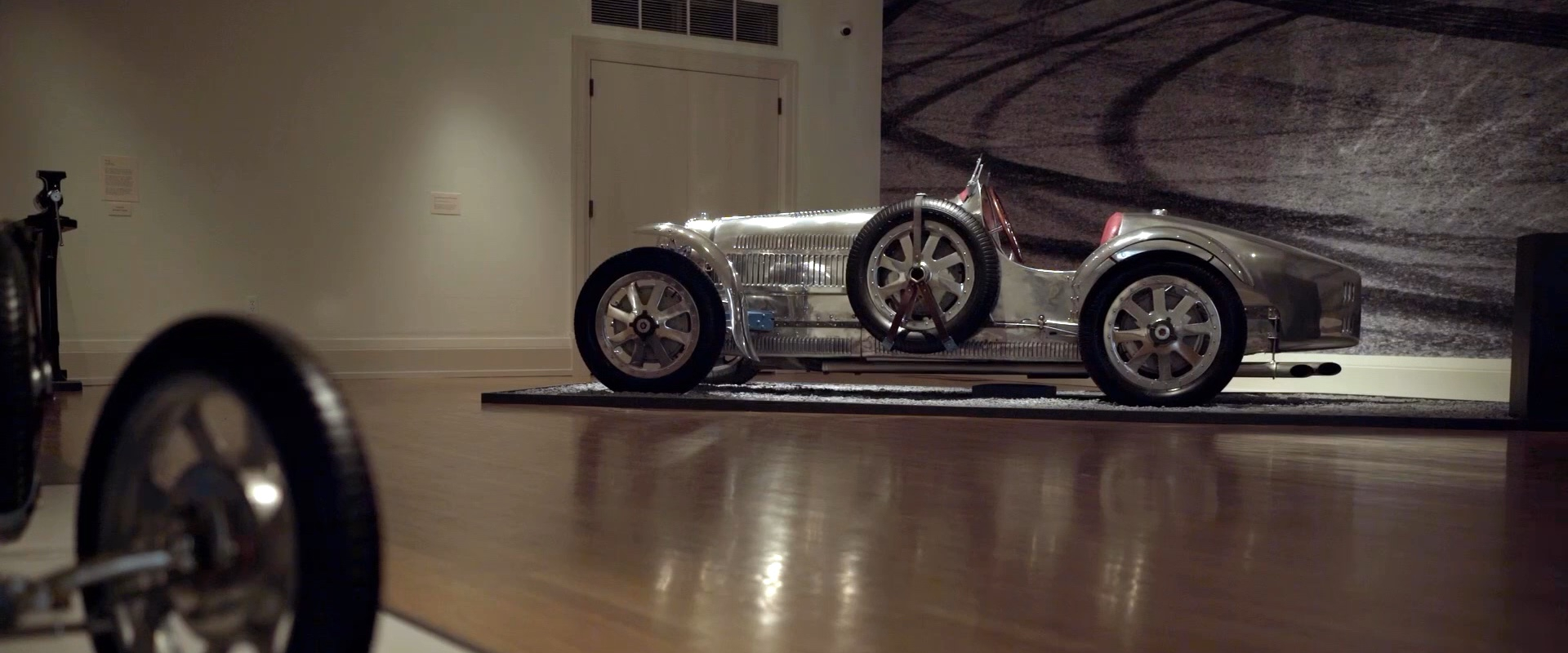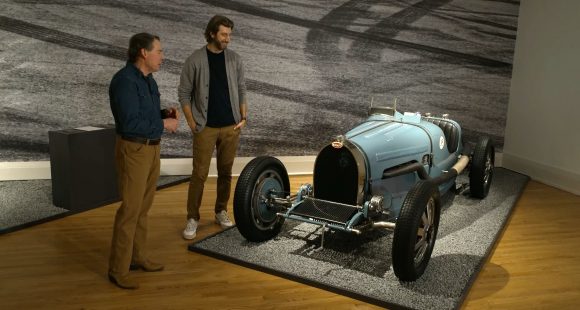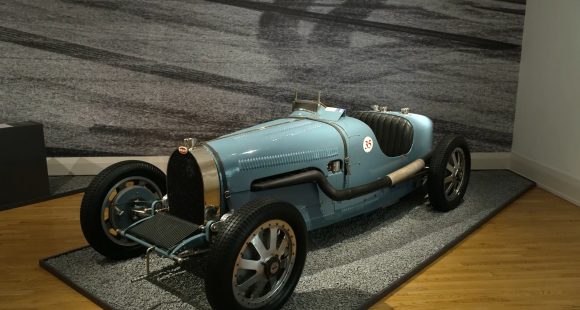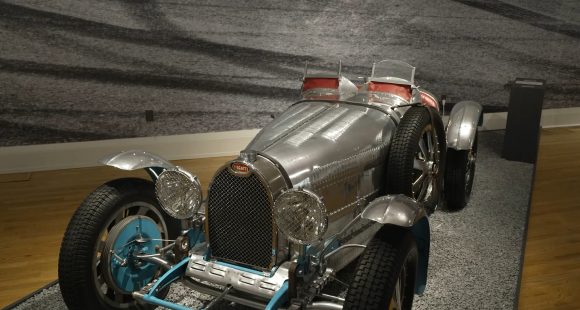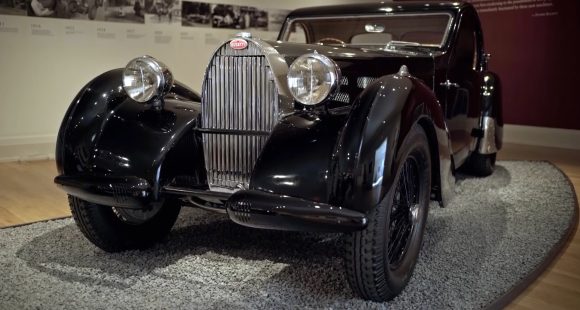Bugatti: Reaching for Perfection
An Exhibit at the Academy Art Museum Showcases Bugatti Family
by Greg Carloss“Form follows function” is a principle of architectural design from around the turn of the 20th century, which is about the same time Ettore Bugatti began designing and building automobiles. And this week our “Over the Edge” guy, Greg Carloss finds himself at the intersection of form and function for a once-in-a-lifetime exhibition going on at a Maryland museum.
GREG CARLOSS: I appreciate works of art as much as the next person, especially when it comes to cars, though if I’m being honest, if I can’t touch it or drive it, I lose interest pretty quick. But when I heard about this rare Bugatti exhibit, well, I made an exception.
Beauty is in the eye of the beholder. Well this beholder believes these Bugattis are beauties. And so do the folks at the Academy Art Museum in Easton, Maryland.
LEE GLAZER: The exhibition “Bugatti: Reaching for Perfection” explores the multi-generational ambition and creativity of the Bugatti family.
GREG CARLOSS: Most people know of the French automobile company founded by Ettore Bugatti in 1909. But it turns out, the Bugatti family was brimming with artists.
LEE GLAZER: And the patriarch, Carlo went to art school and actually trained to be an architect, but he found himself much more interested in furniture design. And the younger son, Rembrandt, actually the parents named him Rembrandt but they thought he was going to become an Engineer. But defying expectations he became a sculptor.
GREG CARLOSS: Carlo and Rembrandt’s works are thoughtfully displayed throughout the exhibit complementing Ettore’s cars, which include two Grand Prixs; a Type 39A and a Type 45 as well as two Type 57s.
DAVID NORTH: Bugatti built about 9,000 cars…so of those 9,000 cars there’s probably a thousand left. The little aluminum Type 39 behind me there were only 14 of those built.
The 16-cylinder Bugatti behind me, there were only 2 built by the factory, there were enough parts built for five…this particular car has engine number five in it. It is one of two in the world that run.
GREG CARLOSS: David North restores plenty of rare cars, but Bugattis hold a special place in his heart.
DAVID NORTH: You have sort of in my mind the best of both worlds. You’ve got these exotic, fussy engines and chassis and you have these beautifully sculpted bodies too and the combination is pretty hard to beat.
GREG CARLOSS: As with most museums, you can’t touch the art, but you can listen.
And you recorded this from this car?
DAVID NORTH: Yeah, yeah we did it right in the cabin.
GREG CARLOSS: My ears are drawn to the Type 45, but my eyes turn to the Type 39.
DAVID NORTH: Bugattis were blue and so when we stripped the paint we found that the handiwork of the aluminum was just terrific. So we wanted to show it and rather than cover it in paint we decided to polish it.
GREG CARLOSS: Speaking of polished, these Type 57s designed by Ettore’s son Jean were the epitome of luxury in the 30s.
This Atalante actually helped a Bugatti Racing driver escape the Nazis in 1940, which is why much of its imperfect character remains. But each of the other cars underwent more extensive restoration in David’s North Street Garage just a few blocks from the Academy Art Museum.

DAVID NORTH: Greg, this is where the action happens. This is the magic that we do.
GREG CARLOSS: That magic usually involves preserving these unique marks, which were hand-scraped into every Bugatti engine by its builder. Sort of like their signature.
DAVID NORTH: Rather than sand it all off and re-mark it, we chose to leave this original signature there.
GREG CARLOSS: Prepping all these cars for display was just business as usual for David. The hard part was actually getting them into this space, although some cars were easier than others.
LEE GLAZER: The owners had to custom design some skates. They were carefully brought through the gallery…the Atlantic had about a quarter-inch on either side…but as you see, it all worked and it worked beautifully and we now know that we can get them out since we got them in.
GREG CARLOSS: The cars will be heading out soon as the exhibition closes on April 13th. So whether you’re a car nut or an art nut, it’s definitely worth checking out before they’re gone.




